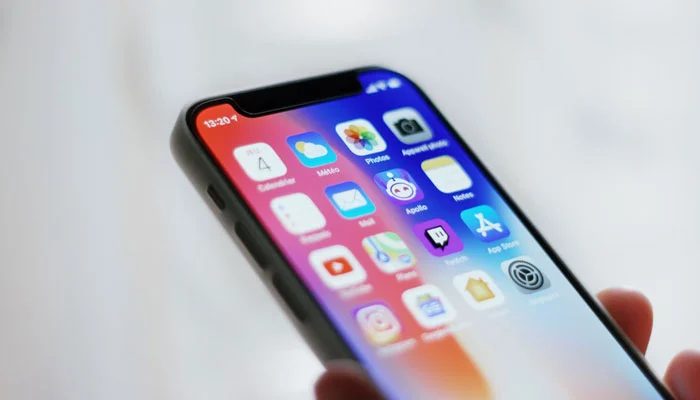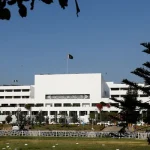The modern era has brought up a difficulty in differentiating between propaganda, fiction, and the reality. For many people worldwide, including those in Pakistan, social media has emerged as their primary information source.
This particularly applies to youth. The majority of people in Pakistan have access to a wide range of phones. Though this is generally positive news, the reality is that very few people are able to tell reality from fiction when using social media mobile applications. Sometimes nobody can, and there’s no shortage of phony and misleading news on social media.
Even if we are aware that social media is rife with false information, it is a fact that we are not always able to distinguish between what is true and what is untrue. There are a number of strategies that may be used to address this issue, and some people are just more adept than others at spotting doctored films and fake news. In this day and age, when technology is readily available, it is very simple to upload doctored videos. Artificial intelligence has also made it feasible to employ technology and social media in this day and age for both positive and harmful purposes.
In actuality, bogus news predominates on social media. Social media is unaffected by the regulations that are present in traditional newsrooms, whether they be in print or electronic media.
The content posted on a social media page cannot be filtered by editors or other staff personnel. As a result, almost anyone may start a YouTube channel and post whatever content they think would be beneficial to their audience or themselves. Thus, we ought to exercise extreme caution when utilizing social media and identifying authentic news. On social media, there are a ton of “anchors” that solely post propaganda or purposefully fabricate exciting stories of all kinds.
Other hoaxes exist as well. We receive inaccurate and unreliable news on crimes, societal difficulties, and medical issues
One example is the controversy that erupted a few years ago over a fabricated movie about the nation’s polio campaign and the claim that the vaccination had a negative impact on children’s health. Numerous others exist. In addition to the internet, WhatsApp and other methods where we get our news also spread the word about the story. Few astute people understand the need of thoroughly verifying information and use websites such as Snopes.com to research stories about pharmaceuticals, medications, or other worldwide crazes.
However, social media has benefits as well. Without it, we would not be aware of the price hike protests in Gilgit-Baltistan, where residents have been staging a sit-in against the growing cost of living for days by sitting in the freezing cold. Other nationwide protests are also occurring, however they are not included in this list even though they ought to be covered by mainstream media. This demonstrates that social media can be helpful, but only when utilized sensibly and with the capacity to discern that not everything posted online is genuine. In fact, a large portion of it is purposeful distortion and falsehood.
To exacerbate the issue, the PTA is being utilized to sabotage the internet in order to suppress news or party happenings that they do not want the public to see or hear. This has resulted in an absurd circumstance. All users, including those in business and school, are unable to access the internet, making it impossible to carry on with a typical workday schedule. In any event, shutting down social media is a nearly impossible task. Too many proxies and other methods exist to hide what viewers are viewing.
Utilizing government resources to teach people how to discern between intentional lies spread across the media and the truth will be far more prudent.
But the truth is that it is unlikely to occur. We are all accustomed to the fact that sometimes distortion works in the interests of the powerful. It is imperative to acknowledge, however, that social media is a permanent fixture in the contemporary digital era. The already multifaceted artificial intelligence will make it more difficult to discern between accurate and verified material and bogus news. Although attempts to restrict access to social media are an ineffective means to address the situation, it is dangerous in many ways. Allowing content to circulate and teaching people how to distinguish between stuff produced within a studio would be significantly more prudent.
Fake news does exist. People urgently need to be made aware of the various websites that they can use to verify the veracity of any news. This is a challenging challenge in a nation where the literacy rate is still only around 50%. Individuals merely accept as true what they are told and what they see on the television. They are unaware of the sheer number of fake news-posting YouTube channels managed by different people. Fake news spreads more widely when established media outlets occasionally use YouTube channels as their news source.
While it makes sense that a large number of the nation’s main news networks have set up fact-checking systems to sift through news and find the truth, many others haven’t and instead depend on the sensationalism of fake news to draw viewers. This could be harmful. It is particularly risky now that an election is only a few weeks away, an election that some people still question will happen. We must devise a system that enables viewers to assess whether the content they are viewing is authentic. Naturally, this is not a simple task.
Still, it’s a crucial one. People need to learn how to use tools and other checks that can distinguish between true news and false information as AI and social media continue to rise. This is significant in a lot of ways.
A growing number of organizations, including political parties, are publishing their information on social media platforms. We can publish news on a number of sites that are managed by different individuals. People in this day and age need to educate themselves about these channels and distinguish between information that is real and that is just false and is being fed to them in order to achieve a specific goal.
.







